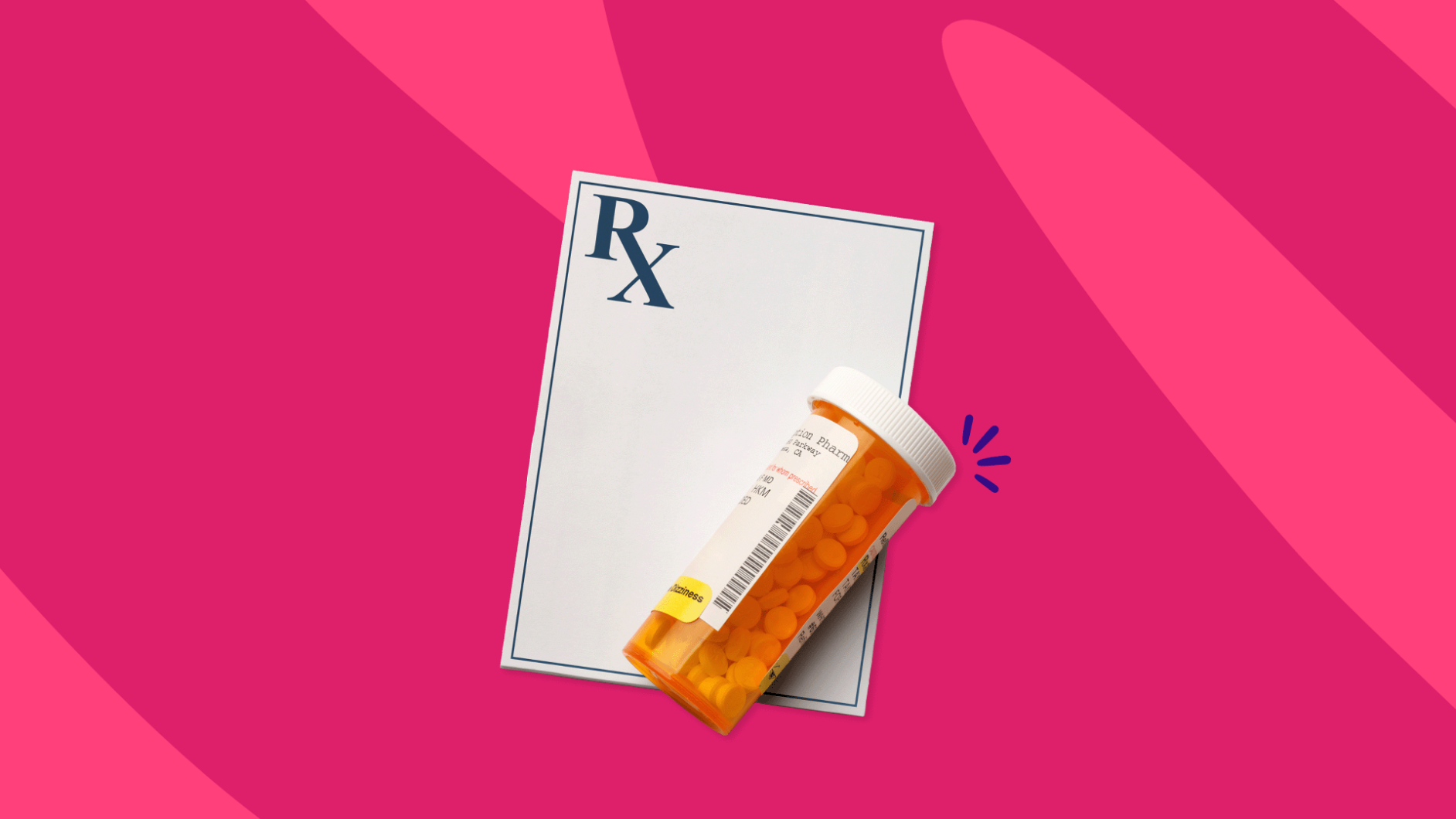Common sulfasalazine side effects | Serious side effects | Blood problems | Male infertility | Side effects timeline | Contraindications | Warnings | Interactions | How to avoid side effects | How to treat side effects
Sulfasalazine is a generic prescription drug that is FDA-approved for the treatment of rheumatoid arthritis, juvenile rheumatoid arthritis, and ulcerative colitis. However, healthcare professionals use sulfasalazine—or its brand-name version, Azulfidine—for a variety of off-label uses, including Crohn’s disease, ankylosing spondylitis, psoriasis, and psoriatic arthritis.
Sulfasalazine is considered to be a disease-modifying antirheumatic drug (DMARD). It slows down the progress of rheumatoid arthritis and inflammatory bowel disease (IBD) by weakening the body’s inflammatory response. Side effects are fairly common, and it can cause adverse reactions in people with a variety of drug allergies.
Common side effects of sulfasalazine
The most common complaints regarding sulfasalazine are digestive system problems, such as nausea, vomiting, and loss of appetite. The complete list of the most common side effects, in order of most to least commonly experienced, is as follows:
- Nausea
- Vomiting
- Loss of appetite
- Low sperm count
- Headache
- Indigestion
- Abdominal pain
- Fever
- Itching
- Dizziness
- Skin rash
- Hives
- Mouth sores
Serious side effects of sulfasalazine
The most serious side effects of sulfasalazine are:
- Blood disorders, including anemia and low white blood cell counts
- Liver poisoning
- Kidney dysfunction
- Swollen pancreas
- Lung problems
- Male infertility
- Seizures
- Severe infections
- Severe allergic reactions
- Severe skin reactions
- System-wide drug reactions
Sulfasalazine and blood problems
Sulfasalazine can bring on a variety of blood disorders. At least 3% of patients taking it will see a drop in white blood cells, making them more vulnerable to infections. Another 1% will experience a drop in their platelets, making them more vulnerable to bleeding and bruising. Other blood disorders include reduced red blood cell counts (anemia) and other deficiencies. Another great concern is that sulfasalazine interferes with the body’s absorption of folate, a nutrient vital to the formation of red blood cells. Some people will need to take folic acid supplements when taking sulfasalazine in order to keep their red blood cells at healthy levels. To prevent blood problems from becoming serious, regular blood tests are required during sulfasalazine treatment.
Sulfasalazine and male infertility
Sulfasalazine can disrupt male fertility. It can decrease the amount of sperm a man produces, increase the number of ill-formed sperm, decrease sperm motility, and even make a man infertile. At least one in three men will experience a decline in sperm counts; the incidences of other effects on sperm have not been determined. These effects are largely reversible when sulfasalazine is discontinued. Men who are trying to get a partner pregnant will need to discuss treatment modifications with the prescriber.
How soon do sulfasalazine side effects start?
Some of the most common side effects of sulfasalazine happen early in treatment, particularly digestive system problems that include nausea, vomiting, upset stomach, diarrhea, and stomach pain. Sulfasalazine’s effects on the body’s organs—liver dysfunction, blood disorders, low sperm counts, and kidney problems—are delayed effects. Skin reactions also require several weeks or months of exposure to sulfasalazine before symptoms start.
How long do sulfasalazine side effects last?
Some of the most commonly experienced adverse effects of sulfasalazine may improve over time, particularly digestive system problems. The body adapts to the drug, but some measures can help minimize these effects. Adverse events that don’t go away will typically improve once the medication is stopped. It can take a few days for the body to clear out the last dose of sulfasalazine, but most side effects should improve before then. Some of the most serious side effects, such as blood disorders, liver damage, and low white blood cell counts, may take some time to return to normal.
What are the long-term side effects of sulfasalazine?
Sulfasalazine can be taken for prolonged periods of time. If taken for the long-term, the prescriber will mainly worry about its possible effects on the kidneys, liver, and blood. Therefore, regular blood tests every two to three months are a normal part of long-term sulfasalazine treatment.
Sulfasalazine contraindications
Sulfasalazine can provoke a serious allergic reaction in people with a variety of drug allergies, so the use of sulfasalazine is contraindicated when any of these drug allergies are present:
- Sulfasalazine allergy
- Sulfa drug allergy (sulfonamide allergy)
- Salicylates allergy
- 5-aminosalicylate or mesalamine allergy
Sulfasalazine is also never prescribed to people with:
- Intestinal obstruction
- Urinary blockage
- Porphyria
Pregnancy
Healthcare professionals are advised to use sulfasalazine only when necessary during pregnancy. Research has shown that there is no increase in birth defects in pregnant women taking sulfasalazine. However, the drug may interfere with the body’s synthesis of folate (vitamin B9), and there have been reports of severe nervous system abnormalities in babies when the mother was taking sulfasalazine while pregnant.
Breastfeeding
Healthcare professionals are advised to use sulfasalazine cautiously in women who are breastfeeding. While only small amounts of sulfasalazine are present in human breast milk, its active metabolite is present in breast milk at a significant percentage of the levels found in the mother’s blood. Women who are breastfeeding should monitor the nursing infant for diarrhea or bloody stools. The drug may need to be discontinued.
Children
Sulfasalazine tablets are FDA-approved for use in children as young as 6 years of age, though healthcare professionals may prescribe sulfasalazine for ulcerative colitis in children as young as 2 years of age.
Seniors
Dosage reductions are not required in people older than 65 years of age. However, sulfasalazine is prescribed cautiously to people with kidney or liver problems, so blood tests assessing kidney and liver function are required before sulfasalazine is prescribed.
Sulfasalazine warnings
Sulfasalazine treatment can bring about several adverse reactions, so a few precautions are in order.
Cautions
Sulfasalazine affects many different systems in the body, including the blood, immune system, and many organs.
Because of its effects on the immune system, sulfasalazine is used cautiously, or even avoided, in people with:
- Active infections
- Chronic infections
- Recurring infections
- A weakened immune system
Because of its possible effects on the blood and other organs, sulfasalazine is used with caution in people with:
- Blood diseases
- Liver disease
- Kidney dysfunction
- Dehydration
Because of possible allergic reactions, sulfasalazine is used cautiously in people with severe allergies or asthma.
Some people break down one of the active metabolites more slowly than others. Called “slow acetylators,” these people may require a reduced dose to prevent side effects.
Abuse and dependence
Drug abuse, physical dependence, and withdrawal are not associated with sulfasalazine.
Overdose
Call a poison control center or get emergency medical treatment if too much sulfasalazine is taken at once. Symptoms of an overdose include nausea, stomach pain, and vomiting. Symptoms of a large overdose may include drowsiness and seizures. For adults, the maximum dosage is four grams per day. Children will have their dosages determined by weight. Because doses are usually individualized, consider the prescribed dosage to be the maximum.
Sulfasalazine interactions
Sulfasalazine, fortunately, does not have a long list of major drug interactions. The most serious drug interactions involve:
- Methenamine: This antibiotic, used for urinary tract infections, can cause sulfasalazine to crystallize in the urine. For this reason, methenamine is never combined with sulfasalazine.
- Local anesthetics: Local anesthetics, such as lidocaine, tetracaine, and other medications ending in “caine,” can cause the body to produce too much methemoglobin in red blood cells when taken in combination with sulfasalazine. Methemoglobin is similar to hemoglobin, but it’s purple rather than red. It tends to hold onto the oxygen it carries, instead of releasing it to the body’s cells as hemoglobin does. Suffice it to say, too much methemoglobin is a bad thing. Because of this risk, healthcare providers avoid combining some of these anesthetics with sulfasalazine.
- Live vaccines: Although vaccines (and live vaccines) can be given to people taking sulfasalazine, the drug weakens the immune system. Therefore, some live vaccines are not advised to get while taking sulfasalazine, including BCG and typhoid vaccines.
- Drugs that slow down the metabolism of sulfasalazine: Some drugs interfere with the liver’s ability to break down sulfasalazine, making side effects more likely. Prescribers and pharmacists are aware of these drugs, so they may modify therapies or dosages.
How to avoid sulfasalazine side effects
As with any prescription drug, a few tried and true precautions can help keep possible side effects to a minimum.
1. Take sulfasalazine as instructed
Do what the prescriber or the prescription label says. Take each dose as prescribed with food. Sulfasalazine tablets are usually taken six to 12 hours apart throughout the day, and it doesn’t make a difference if they’re immediate-release or delayed-release tablets. If a dose is missed, take it when remembered if it is closer to the time of the missed dose than the time of the next dose. However, if it’s almost time for the next dose, skip the missed dose and take the next dose on time. Do not take extra doses to make up for a missed dose.
2. Tell the prescriber about all medical conditions and medications
The first step in order to avoid serious problems is to make sure the prescriber knows about all medical conditions, especially:
- Drug allergies
- Infections
- Asthma
- Blood problems or low blood cell counts
- Liver disease
- Kidney disease
- Pregnancy or plans to become pregnant
- Breastfeeding or plans to breastfeed
Ensure that the prescriber is also aware of all prescription drugs, over-the-counter medications, and dietary supplements being taken. When getting any new prescription or vaccine, tell the healthcare provider you’re taking sulfasalazine.
3. Keep all follow-up appointments
The healthcare provider may need regular blood tests to spot any problems with the blood, kidneys, and liver. It may also be necessary to monitor infections or spot early symptoms of a skin or drug reaction.
4. Eat simple foods
Most people taking sulfasalazine complain about stomach problems. These can be minimized by eating simple or bland foods and avoiding spicy, rich, or fatty foods.
5. Protect the skin from sunlight
Sulfasalazine can make the skin more sensitive to sunlight. Sunburns and other skin reactions are more likely to occur and could be more severe while taking sulfasalazine. Stay away from tanning beds. Try to avoid direct sunlight, but if that is not possible, wear protective clothing over the skin or use a high-SPF sunscreen. If a dermatologist suggests using phototherapy, make sure they know that you’re taking sulfasalazine.
How to treat side effects of sulfasalazine
Fortunately, most people will only experience mild side effects when taking sulfasalazine. A few simple measures can help improve these adverse effects. Some of sulfasalazine’s possible side effects, however, may require medical assistance.
Nausea and vomiting
Drink fluids to keep from dehydrating. An antihistamine or other antinausea drug should be okay to take, but ask the prescriber first. If vomiting is severe or prolonged, call the prescriber or go to an emergency room.
Headaches
As a general rule, drinking fluids and resting can help ease headache pain without needing medications. If an over-the-counter pain reliever is required, ask the healthcare provider for medical advice. Acetaminophen should be okay to take, but aspirin, ibuprofen, or other nonsteroidal anti-inflammatory drugs (NSAIDs) might not be a good idea. If headaches are severe or don’t go away, talk to the prescriber.
Infections
Always tell the prescriber about any new infections or symptoms of an infection, such as a sore throat, cough, or fever. These infections could potentially be worse than normal in people taking sulfasalazine, especially when it’s combined with other immunosuppressive drugs like methotrexate.
Blood problems
Sulfasalazine has a high risk of creating blood abnormalities, particularly low white blood cell counts. Get medical help if any of the following symptoms are noticed:
- Frequent or long-lasting infections
- Pale skin
- Easy bruising
- Unusual bleeding
- Nosebleeds
- Unusual tiredness
- Weakness
Liver problems
Immediately contact the prescribing healthcare provider if you notice the symptoms of liver dysfunction:
- Stomach pain
- Dark urine
- Fever
- Tiredness
- Yellowing of the skin or eyes
Pancreas problems
Immediately contact the prescribing healthcare provider if you notice the following signs of pancreatitis:
- Stomach pain
- Back pain
- Fever
- Nausea
- Vomiting
Kidney problems
Signs of kidney dysfunction will also require medical attention:
- Changes in the amount or frequency of urination
- Painful urination
Allergic reactions
Severe allergic reactions are possible when taking sulfasalazine, so discontinue the drug and get emergency medical treatment if experiencing swelling of the face, mouth, or throat, trouble breathing, or hives.
Skin reactions
A skin reaction to sulfasalazine can be severe and even life-threatening, so stop taking the drug and get medical attention for any of the signs of a skin reaction, including:
- Skin rash
- Fever
- Sores in the mouth
- Skin blisters
- Skin peeling
- Skin pain
- Burning eyes
Drug reactions
Alternatively, a drug reaction to sulfasalazine may affect more than the skin and involve vital body organs. Again, immediate emergency care and the discontinuation of sulfasalazine are required if this occurs. Symptoms include:
- Skin rash
- Swollen lymph nodes
- Fever
- Unusual or severe weakness
- Bruising
- Muscle pain or aches
- Yellowing of the skin or eyes
Sources
- Azulfidine prescribing information, U.S. National Library of Medicine
- Sulfasalazine, Epocrates
- Sulfasalazine, StatPearls
- Sulfasalazine drug summary, Prescriber’s Digital Reference











